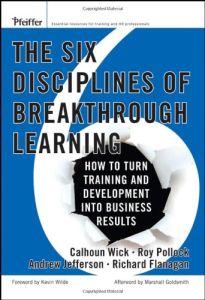
Recommendation
Even if learning professionals design superb programs with outstanding content and instructors deliver the material in engaging, compelling ways, these programs unfortunately may not be relevant to actual daily operations. They may lack solid business – as opposed to learning – objectives. Such initiatives may not accomplish what managers intend and will not make your business grow. Calhoun Wick, Roy Pollock, Andrew Jefferson and Richard Flanagan explain how learning officers and training departments can use their “six disciplines” or “6D” approach to increase the effectiveness and impact of training and development programs. They’ve written a good book – a tad dry but very thorough – that outlines a top-quality program. The authors repeat, a bit too frequently, that training’s real payoff occurs in its practical application. getAbstract believes this book will help those who provide, purchase or benefit from corporate training and development.
Summary
About the Authors
Calhoun Wick is CEO of Fort Hill, a consultancy, where Roy Pollock is chief learning officer, Andrew Jefferson is president and COO, and Richard Flanagan is senior vice president.














Comment on this summary